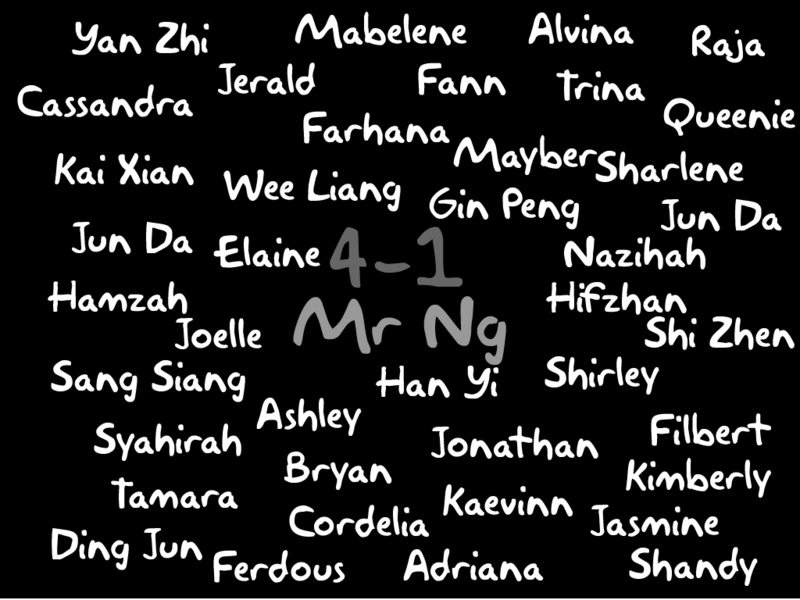
Pain relief
-- POSED PHOTO: DESMOND WEE
The words 'angst', 'cutting' and 'emo' are part of today's mainstream teenage lexicon. And that should be a warning.
'It's not just a Singaporean thing,' says Dr Brian Yeo, consultant psychiatrist at Mount Elizabeth Medical Centre.
'All over the world, this phenomenon is getting more airplay. It is highlighted in the media, in American Idol, Singapore Idol.'
Youth face a host of pressures ranging from intense academic competition to relationship commitments.
Often, they feel suffocated by demands that they are unable to fulfil, whether self-imposed or not.
The result is often a feeling of anxiety, frustration, disillusionment and insecurity - a phenomenon commonly known as angst.
Even if teenagers are able to outrun external sources of stress, angst may still catch up with them.
Growing pains can also be manifested as angst, hitting teenagers hard as they struggle to find their footing in a fast-paced world.
The unavoidable acne, first crushes, a sudden obsession with looks - all these serve only to exacerbate an already pressing problem.
Angst may also be the result of a teen subculture.
In recent years, there has been a proliferation of 'emokids' - teens who stereotypically wear black, embrace the melancholic side of life and have mantras like 'I hate the world, no one understands me'.
'They are more in touch with their feelings and they are more emotional. Some of them even engage in self-harm,' says Dr Yeo.
Attention-seeking behaviour can also be a cause of angst, as can long-term mental health issues such as paranoia or depression.
The point is that there are countless sources of angst and teenagers are relentlessly buffeted by them. It is little wonder that they are constantly seeking avenues to release their pent up feelings.
While some teenagers may choose to play sports or write music, others may turn to more detrimental means to unwind.
Cutting oneself is one of these methods.
'When someone cuts himself, the pain will trigger the release of endorphins. These hormones will numb the pain and give the person something like a 'high'. The effect of endorphins can be similar to certain hard drugs like heroin, which makes cutting so addictive,' says Dr Daniel Fung, chief of the department of child and adolescent psychiatry at the Institute of Mental Health.
In this case, razors, penknives, nail clippers or anything with a sharp or pointed edge become potential sources of relief, as teenagers find a physical outlet for emotional pain through self-mutilation.
Substance abuse is another. Cough syrup, glue sniffing and even alcohol provide a key to an escapist fantasy-land, even if only for a while.
'The incidence of glue sniffing is also on the rise', says
Dr Yeo.
'Also, there are many clubs opening in Singapore and teenagers go to many parties where drinks are easily available.'
Promiscuity is also on the list. A lack of self-love, parental love or support from friends often leads to teenagers looking for affection in all the wrong places.
'In the past, it was accepted that boys and girls were respectful of their chastity, but such people are now exceptional,' says Dr Yeo.
'While we can advise and cajole them, their thinking has already changed.'
Self-isolation, unprovoked aggression and violence are also examples of such behaviour.
Unfortunately, the use of such methods of stress relief seems to have increased in recent years.
Dr Fung also warns of the contagion effect - a teenager who is exposed to it more often is more likely to begin to explore such methods.
But there's help. Over the past few decades, the number of mental health-care avenues available to youths has burgeoned.
More hotlines are being set up, and there are counsellors stationed in many schools to provide support and professional guidance.
But many youths still don't seek help, maybe because they do not see their destructive behaviour as a problem.
They accept cutting their wrists or other parts of their body as a legitimate method of stress relief.
And many parents are oblivious to their children's circumstances.
'Many children have two working parents. They may have more disposable incomes and greater access to IT, but the time spent together is very little,' says Dr Yeo.
Teenagers are at a critical juncture in their lives and they not only need parental support, but they also need parents to catch them before they slip into the habit of self-harm.
Teenagers may also turn their feelings in upon themselves because of the unavailability of appropriate professional help.
While the school counsellor is easily accessible, there is an immense amount of stigma - such as being labelled 'crazy' by classmates - attached to seeking psychological help in school say the doctors interviewed.
But private psychiatrists are not as easily available and it can cost over $100 an hour to seek private professional help, excluding the cost of medication such as antidepressants.
While it is commonplace now for teenagers to 'horrify' adults with their hobbies, fashion, music and language, these passions usually take the form of harmless whims that they outgrow.
Unfortunately for some, like those we feature, their behaviour can be self-destructive.
lting@sph.com.sg
Razors, penknives, nail clippers become a potential source of relief, as teenagers find a physical outlet for emotional pain through self-mutilation.
But many youths still don't seek help, maybe because they do not see their destructive behaviour as a problem.

No comments:
Post a Comment